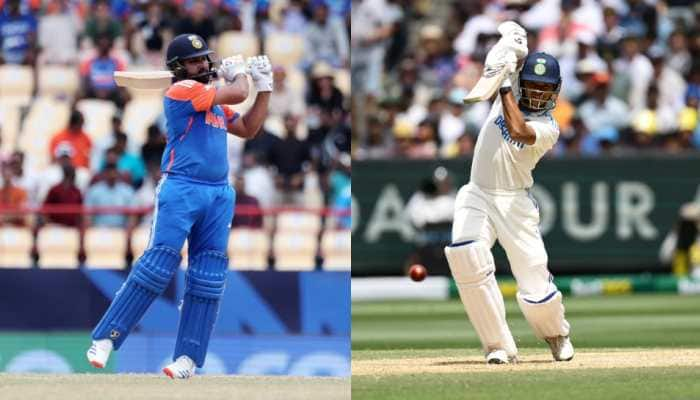Arun Jaitley’s Union Budget 2016-17: Five Takeaways
Possibly too keenly aware of the BJP being seen as corporate friendly and, possibly, deriving lessons from the Bihar drubbing, the government has most conspicuously given an agri and rural push.
Trending Photos
)
Akrita Reyar
Finance Minister Arun Jaitley seems to have taken the cautious approach rather than going for an all-out reform centric or even populist budget. Possibly too keenly aware of the BJP being seen as corporate friendly and, possibly, deriving lessons from the Bihar drubbing, the government has most conspicuously given an agri and rural push.
Here are the main takeaways from Union Budget speech today:
State of the Economy
Growth of the Economy accelerated to 7.6% in 2015-16
Foreign exchange reserves touched highest ever level of about 350 billion US dollars.
Fiscal deficit in RE 2015-16 and BE 2016-17 retained at 3.9% and 3.5%.
Planned / Non-Planned Expenditure classification to be done away with from 2017-18.
Black Money: Domestic taxpayers can declare undisclosed income or such income represented in the form of any asset by paying tax at 30%, and surcharge at 7.5% and penalty at 7.5%, which is a total of 45% of the undisclosed income. Declarants will have immunity from prosecution.
Taxation: The good news and bad
Government to raise the ceiling of tax rebate under section 87A from `2000 to `5000 to lessen tax burden on individuals with income upto `5 laks.
Increase the limit of deduction of rent paid under section 80GG from `24000 per annum to `60000, to provide relief to those who live in rented houses.
Deduction for additional interest of `50,000 per annum for loans up to `35 lakh sanctioned in 2016-17 for first time home buyers, where house cost does not exceed ` 50 lakh
Government to pay contribution of 8.33% for of all new employees enrolling in EPFO for the first three years of their employment. Budget provision of ` 1000 crore for this scheme.
Increase in the turnover limit under Presumptive taxation scheme under section 44AD of the Income Tax Act to ` 2 crores
Extension of presumptive taxation scheme with profit deemed to be 50%, to professionals with gross receipts up to `50 lakh.
Lower corporate tax rate for the next financial year for relatively small enterprises i.e companies with turnover not exceeding ` 5 crore (in the financial year ending March 2015),
Withdrawal up to 40% of the corpus at the time of retirement to be tax exempt in the case of National Pension Scheme (NPS). Annuity fund which goes to legal heir will not be taxable.
In case of superannuation funds and recognized provident funds, including EPF, the same norm of 40% of corpus to be tax free will apply in respect of corpus created out of contributions made on or from 1.4.2016. (The remaining 60% will now be taxable.)
Limit for contribution of employer in recognized Provident and Superannuation Fund of ` 1.5 lakh per annum for taking tax benefit. Exemption from service tax for Annuity services provided by NPS and Services provided by EPFO to employees.
Tackling Tax Disputes and Fighting Uncertainty
High Level Committee chaired by Revenue Secretary to oversee fresh cases where assessing officer applies the retrospective amendment.
One-time scheme of Dispute Resolution for ongoing cases under retrospective amendment.
Penalty rates to be 50% of tax in case of underreporting of income and 200% of tax where there is misreporting of facts.
Disallowance will be limited to 1% of the average monthly value of investments yielding exempt income, but not exceeding the actual expenditure claimed under rule 8D of Section 14A of Income Tax Act.
Time limit of one year for disposing petitions of the tax payers seeking waiver of interest and penalty.
Mandatory for the assessing officer to grant stay of demand once the assesse pays 15% of the disputed demand, while the appeal is pending before Commissioner of Income-tax (Appeals).
Monetary limit for deciding an appeal by a single member Bench of ITAT enhanced from ` 15 lakhs to ` 50 lakhs.
11 new benches of Customs, Excise and Service Tax Appellate Tribunal (CESTAT).
Legal framework to resolve disputes with financial firms / PPP sector
What’s Expensive - Ready to dole out more!
Infrastructure cess, of 1% on small petrol, LPG, CNG cars, 2.5% on diesel cars of certain capacity and 4% on other higher engine capacity vehicles 13 and SUVs.
Also to get expensive are:
Bill payments, eating out, air travel, visiting beauty parlours
Cigarettes, cigar, tobacco, paper rolled beedis and gutaka
Ready made garments and branded apparel of more than Rs 1,000
Gold bars, Gold and Diamonds, Jewellery articles excluding silver
Water including mineral water, aerated water containing added sugar or sweetening matter
Goods and services above Rs 2 lakh in cash
Aluminum foil, Plastic bags and sacks
Ropeway, cable car rides
Legal services
Lottery tickets
Hiring of packers & movers
E-reading devices, Instruments for VoIP (Voice over Internet Protocol)
Imported Golf Cars
BPL, Rural and Farm Sector
Allocation for Agriculture and Farmers’ welfare at Rs 35,984 crore
Total allocation for rural sector - ` 87,765 crore.
28.5 lakh hectares will be brought under irrigation.
Rural roads allocation at Rs 19,000 crore. To connect remaining 65,000 eligible habitations by 2019.
Crop insurance allocation at Rs 5,500 crore.
Facility of cooking gas connection for BPL families
New health insurance scheme to protect against hospitalisation expenditure
100% village electrification by 1st May, 2018.
A new Digital Literacy Mission Scheme for rural India to cover around 6 crore additional household within the next 3 years.
Stay informed on all the latest news, real-time breaking news updates, and follow all the important headlines in india news and world News on Zee News.
Live Tv







)
)
)
)
)
)
)
)
)
)
